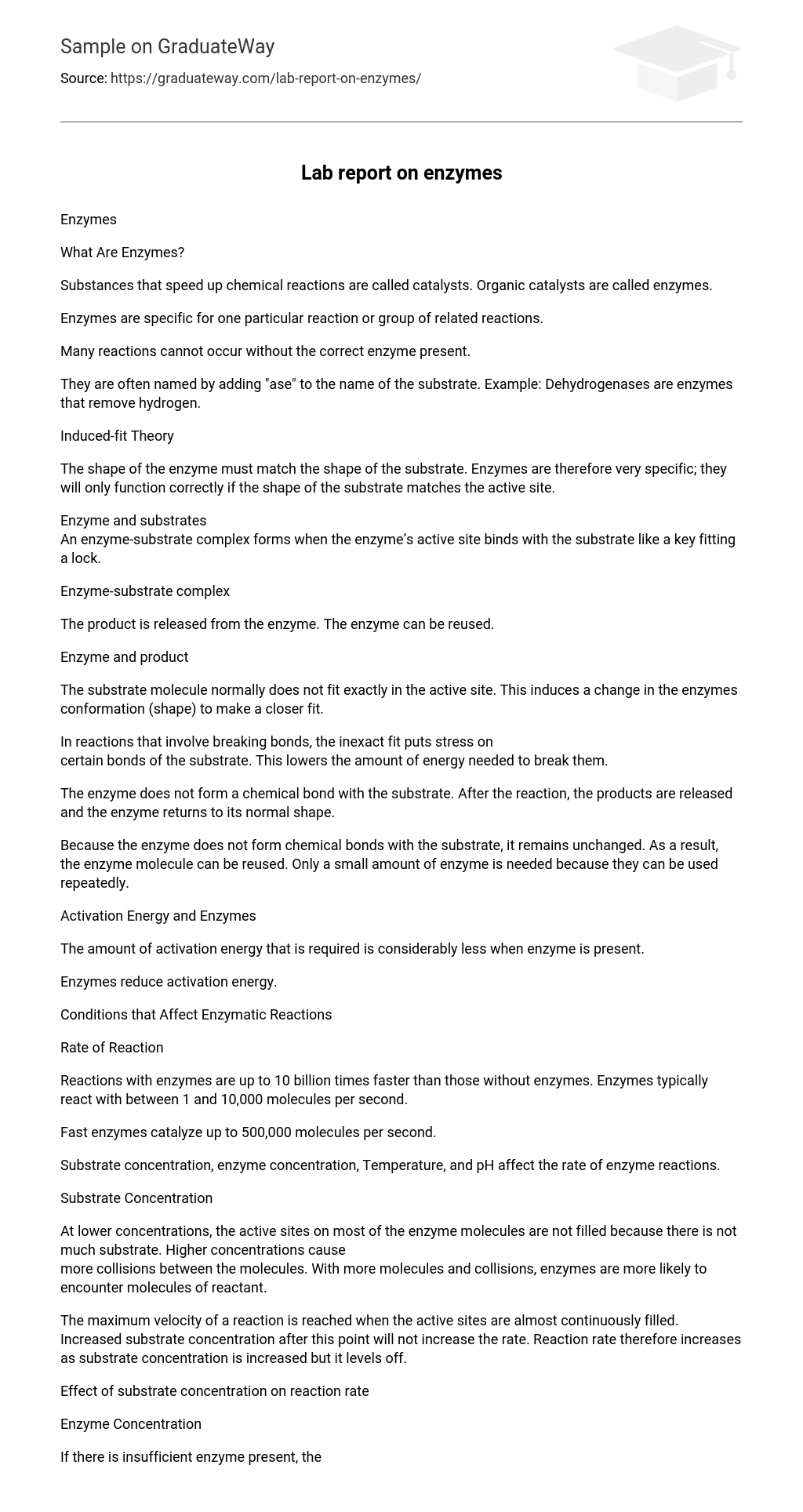Enzymes
What Are Enzymes?
Substances that speed up chemical reactions are called catalysts. Organic catalysts are called enzymes.
Enzymes are specific for one particular reaction or group of related reactions.
Many reactions cannot occur without the correct enzyme present.
They are often named by adding “ase” to the name of the substrate. Example: Dehydrogenases are enzymes that remove hydrogen.
Induced-fit Theory
The shape of the enzyme must match the shape of the substrate. Enzymes are therefore very specific; they will only function correctly if the shape of the substrate matches the active site.
Enzyme and substrates
An enzyme-substrate complex forms when the enzyme’s active site binds with the substrate like a key fitting a lock.
Enzyme-substrate complex
The product is released from the enzyme. The enzyme can be reused.
Enzyme and product
The substrate molecule normally does not fit exactly in the active site. This induces a change in the enzymes conformation (shape) to make a closer fit.
In reactions that involve breaking bonds, the inexact fit puts stress on
certain bonds of the substrate. This lowers the amount of energy needed to break them.
The enzyme does not form a chemical bond with the substrate. After the reaction, the products are released and the enzyme returns to its normal shape.
Because the enzyme does not form chemical bonds with the substrate, it remains unchanged. As a result, the enzyme molecule can be reused. Only a small amount of enzyme is needed because they can be used repeatedly.
Activation Energy and Enzymes
The amount of activation energy that is required is considerably less when enzyme is present.
Enzymes reduce activation energy.
Conditions that Affect Enzymatic Reactions
Rate of Reaction
Reactions with enzymes are up to 10 billion times faster than those without enzymes. Enzymes typically react with between 1 and 10,000 molecules per second.
Fast enzymes catalyze up to 500,000 molecules per second.
Substrate concentration, enzyme concentration, Temperature, and pH affect the rate of enzyme reactions.
Substrate Concentration
At lower concentrations, the active sites on most of the enzyme molecules are not filled because there is not much substrate. Higher concentrations cause
more collisions between the molecules. With more molecules and collisions, enzymes are more likely to encounter molecules of reactant.
The maximum velocity of a reaction is reached when the active sites are almost continuously filled. Increased substrate concentration after this point will not increase the rate. Reaction rate therefore increases as substrate concentration is increased but it levels off.
Effect of substrate concentration on reaction rate
Enzyme Concentration
If there is insufficient enzyme present, the reaction will not proceed as fast as it otherwise would because all of the active sites are occupied with the reaction. Additional active sites could speed up the reaction.
As the amount of enzyme is increased, the rate of reaction increases. If there are more enzyme molecules than are needed, adding additional enzyme will not increase the rate. Reaction rate therefore increases as enzyme concentration increases but then it levels off.
Effect of enzyme concentration on reaction rate
Temperature
Higher temperature generally causes more collisions among the molecules and therefore increases the rate of a reaction. More collisions increase the likelihood that substrate will collide with the active site of the enzyme, thus increasing the rate of an enzyme-catalyzed reaction.
Above a certain temperature, activity begins to decline because the enzyme begins to denature.
The rate of chemical reactions therefore increases with temperature but then decreases.





